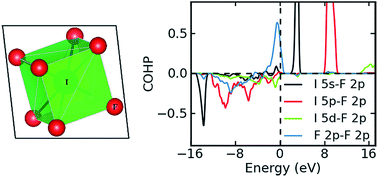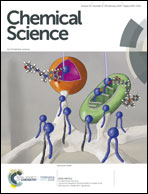A hypervalent and cubically coordinated molecular phase of IF8 predicted at high pressure†
Abstract
Up to now, the maximum coordination number of iodine is seven in neutral iodine heptafluoride (IF7) and eight in anionic octafluoride (IF8−). Here, we explore pressure as a method for realizing new hypercoordinated iodine compounds. First-principles swarm structure calculations have been used to predict the high-pressure and T → 0 K phase diagram of binary iodine fluorides. The investigated compounds are predicted to undergo complex structural phase transitions under high pressure, accompanied by various semiconductor to metal transitions. The pressure induced formation of a neutral octafluoride compound, IF8, consisting of eight-coordinated iodine is one of several unprecedented predicted structures. In sharp contrast to the square antiprismatic structure in IF8−, IF8, which is dynamically unstable under atmospheric conditions, is stable and adopts a quasi-cube molecular configuration with R![[3 with combining macron]](https://www.rsc.org/images/entities/char_0033_0304.gif) symmetry at 300 GPa. The metallicity of IF8 originates from a hole in the fluorine 2p-bands that dominate the Fermi surface. The highly unusual coordination sphere in IF8 at 300 GPa is a consequence of the 5d levels of iodine coming down and becoming part of the valence, where they mix with iodine's 5s and 5p levels and engage in chemical bonding. The valence expansion of iodine under pressure effectively makes IF8 not only hypercoordinated, but also hypervalent.
symmetry at 300 GPa. The metallicity of IF8 originates from a hole in the fluorine 2p-bands that dominate the Fermi surface. The highly unusual coordination sphere in IF8 at 300 GPa is a consequence of the 5d levels of iodine coming down and becoming part of the valence, where they mix with iodine's 5s and 5p levels and engage in chemical bonding. The valence expansion of iodine under pressure effectively makes IF8 not only hypercoordinated, but also hypervalent.



 Please wait while we load your content...
Please wait while we load your content...